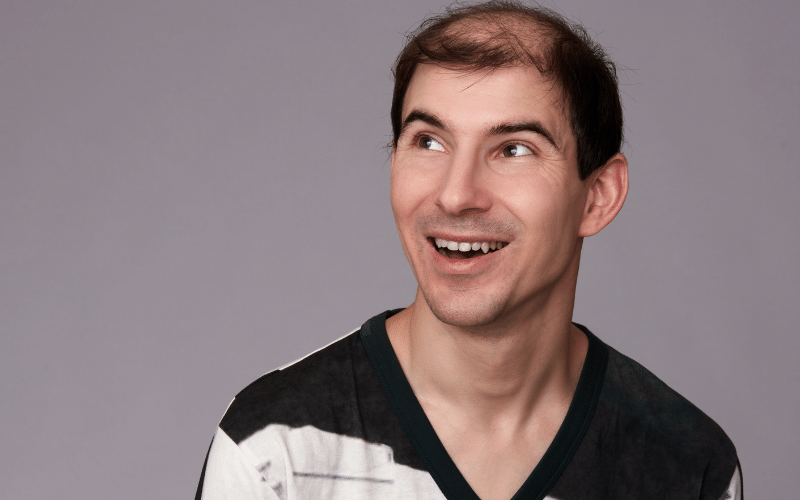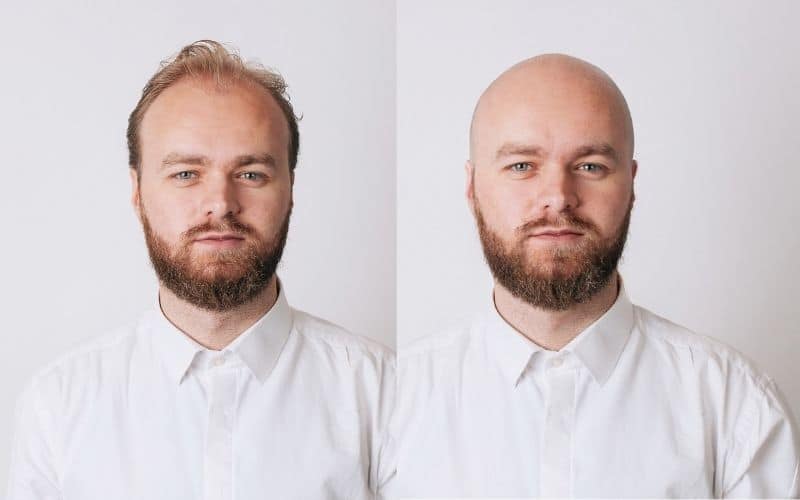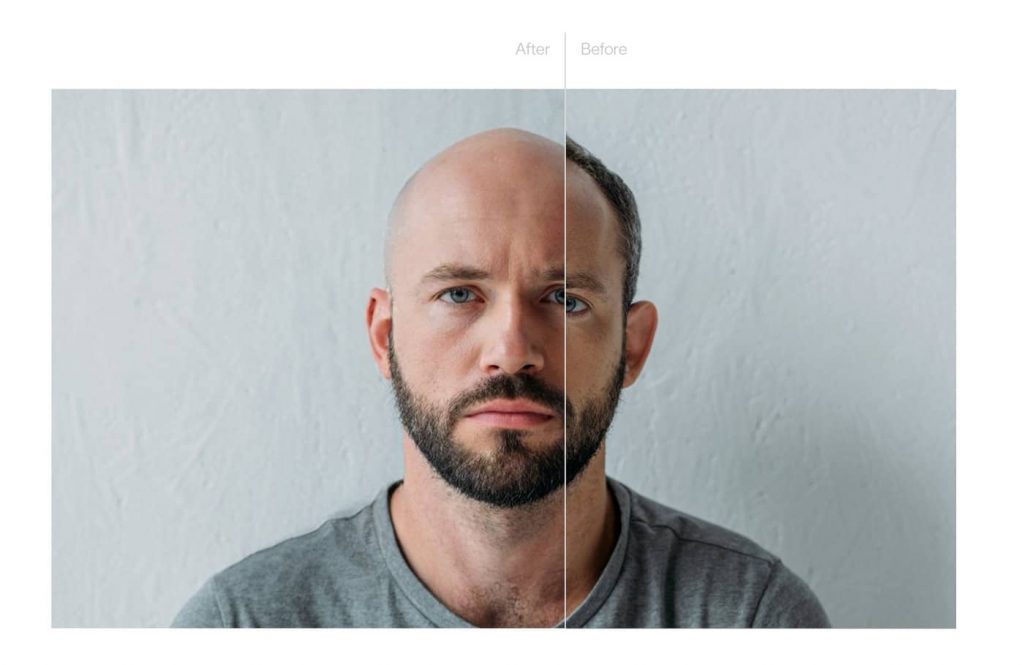If you’re noticing some thinning patches of hair or that your forehead seems to be getting larger every month, you may need to seek the Norwood Scale for some guidance on your hair loss journey.
The Norwood Scale originated in the 1950’s by someone called Hamilton but then was redefined in the 70’s by Norwood which is why it is often referred to as the Hamilton-Norwood Scale. This scale is used by doctors, dermatologists, clinicians, surgeons and all medical fields as the go-to guide for hair loss. It is the leading classification system in identifying the stages of male pattern baldness. It’s broken down into seven stages that every man will go through in his lifetime. So let’s see where you stand.
What are the 7 stages of hair loss?
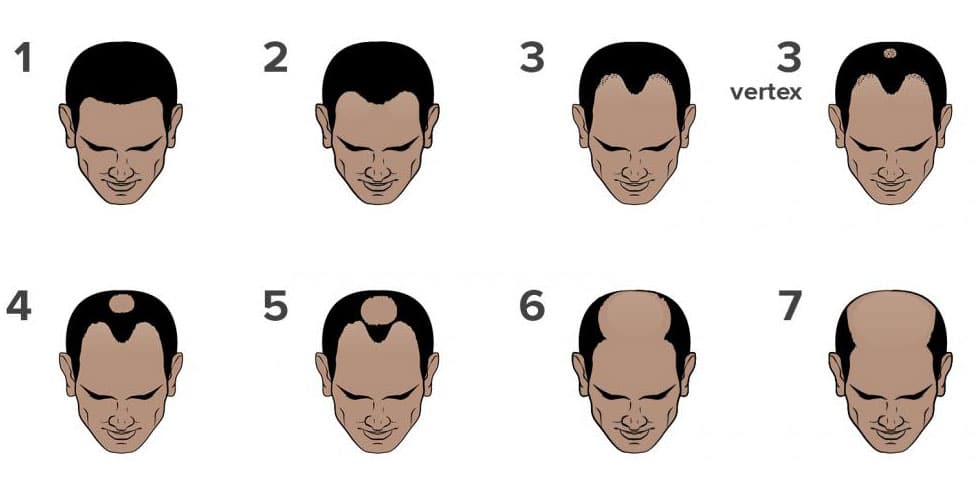
Stage 1
There are no signs of receding hairlines or hair loss. Men in this stage still have their full head of hair.
Stage 2
In stage two there may be slight recession of the hairline, specifically around the temples.
Stage 3
Here, men see a deeper receding (or thinning) hairline that often forms a shape on the head such as an M (made from the hairline) or a V/U shape made by the peak of the hair. Hair thinning at the crown can also be experienced in stage 3 vertex.
Stage 4
Hair is very thin around the crown and receding hair line is falling further back. This leaves a headband of hair over the top of the head, connecting to the hair on either sides.
Stage 5
The receding hairline goes even deeper and crown hair loss gets worse, creating a very skinny hairband on top of the head.
Stage 6
The receding hairlines from the temple and crown meet up leaving little or no hair on top of the head.
Stage 7
Only a band of hair around the base of the head remains. In extreme cases even this hair can be fine.
Norwood Class A
The above stages of balding around the crown as well as a receding hairline at the front is most common, but some men don’t suffer hair loss around the crown. Their hairline disappearance progresses from front to back instead.
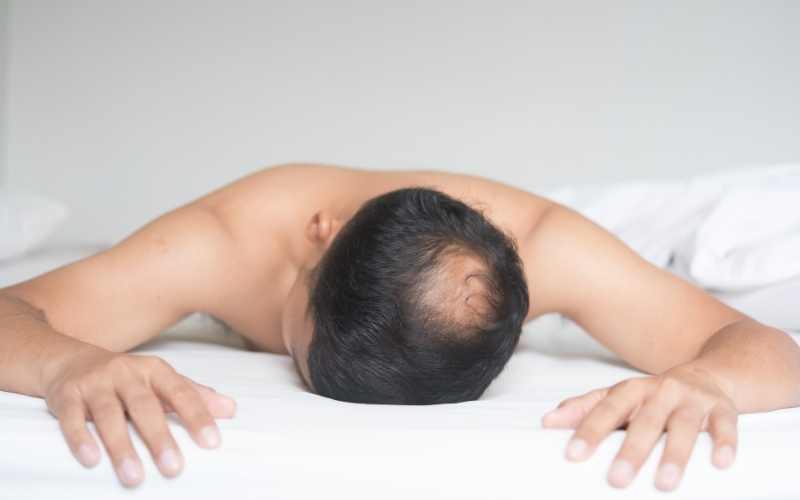
How to assess your spot on the Norwood Scale
It can be hard when you look at yourself every day to notice any significant changes in your hairline or fullness, so there are two ways to go about finding out:
- Take photos of yourself continuously over a period of a few months and keep checking in. Alternatively, look back at old photos of yourself.
- Ask friends and family if they notice any differences in your hair. People who don’t see you every day will notice more obviously if there are changes.
What can I do if I notice I am balding?
If you notice your hair is starting to look like one of those pictures above, then there are a few ways to assess if you will go bald. Unfortunately a lot of the time there isn’t much you can do, but here are some tips that may help a little:
Stop scratching your scalp
If your head is irritated, itching it can only loosen more strands. Use something like apple cider vinegar, coconut oil or tea tree oil to calm irritation.
Don’t dye or use chemicals on your hair
This can weaken hair follicles and make them snap. Opt for organic dye options if you insist.
Wash hair regularly with mild shampoo
This keeps the scalp healthy and clean but also avoids drying out the hair with heavy chemicals.
Don’t brush your hair wet
Wet hair is more fragile so be gentle when styling, drying and brushing as to not pull more hairs out. Avoid using heat styling tools as much as possible.
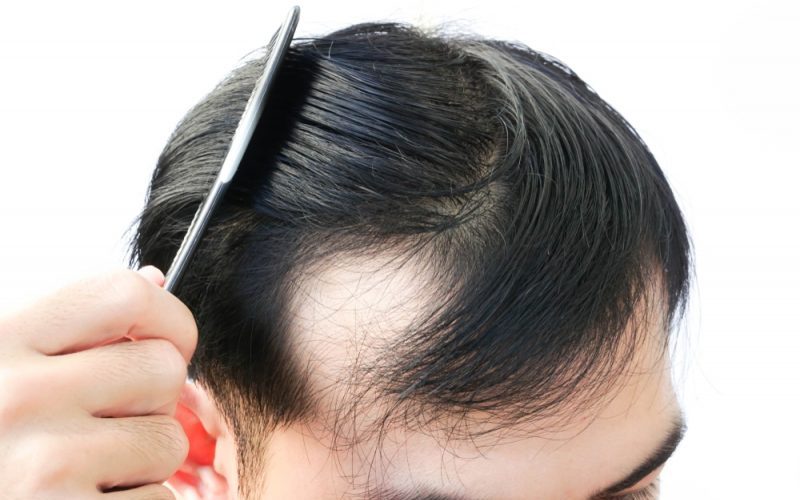
Avoid tying your hair up
If you rock the man bun look but notice your hair is thinning, avoid the elastic bands for a while as this only causes strain on your strands.
Focus on your diet
Diet is key in maintaining healthy hair and scalp. A 2018 study found that eating a lot of raw vegetables and herbs (for example a Mediterranean diet) reduced the risk and slowed the onset of MPB.
Including more protein in your diet will also help as hair is made from a protein called keratin. A lot of people suffering from hair loss have deficiencies in amino acids which are the building blocks of protein.
Take multivitamins
Vitamins A, B, C, D, iron, selenium, and zinc are all important for hair growth.
Vitamin D deficiency is directly linked to alopecia as it causes hair growth to be stunted. The sun provides us with vitamin D as well as seafood, mushrooms and egg yolk.
Biotin (vitamin H or B7) deficiency can also be linked to hair loss.
Vitamin A is proven to increase the rate of hair growth and sebum production. You can find it naturally in foods like peppers, sweet potato and spinach.
Ginseng
You can use products which include ginseng or take supplements to promote hair growth. It is a fairly new method though, so best to check with your doctor first.
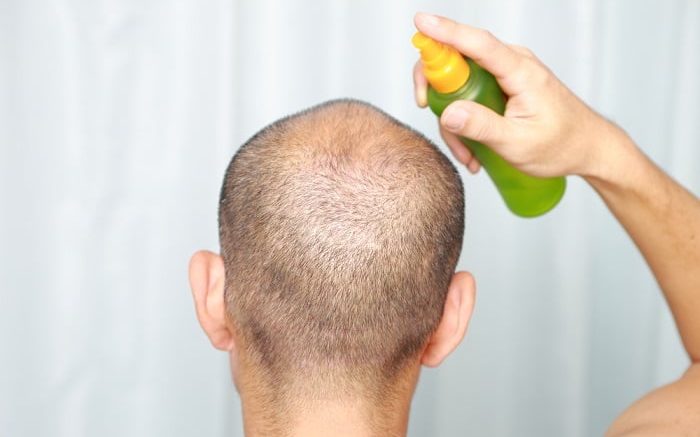
What to do in the early stages of hair loss
First, look at your genetics as they are 80% to blame and mostly responsible for the likelihood that you will go bald. If you have family history of male pattern baldness and most of your male family members are bald, then it’s likely you are already on your way too.
Second thing to gage is what stage your hair loss is in. If you are at the early stages, then your hair follicles may still be active and able to be rejuvenated. This article explains some more products and methods that may work to promote hair growth as well as hairstyles to hide a thinning crown. There can be a good chance for regrowth if the hair is just at it’s thinning stage but once the hair follicles stop growing new hairs, it is too late to regenerate.
What to do in the late stages of hair loss
If it is too late, then your two best friends are going to be acceptance and a razor. But, when should you shave your head? Hopefully our guide helps you to decide on that but taking action and owning your new look is the best way to go about it.
Can you be diagnosed with male pattern baldness?
Yes, doctors can do a family medical history check and a physical examination to check for things such as your stage of hair loss on the Norwood Scale and DHT levels. It is important to remember where you sit on the scale when consulting a doctor over the phone or online as so many of us do these days. This will make sure the doctor can give you accurate information and advice.
Doctors can also run a few tests to make sure your hair loss isn’t due to an illness, nutrient deficiency or fungal conditions.
You can also consult dermatologists who can examine the scalp and hair follicles to check for miniaturisation using a densitometer. They can then assess the hair follicles and proper level of hair loss to recommend treatments that can or shouldn’t be taken.
Warning
Some dermatologists may request you to pay for expensive services such as a hair analysis or scalp biopsy to properly diagnose you. That is only necessary on the most rarest of cases, for example when poison induced hair loss is of concern. Even when this is the main cause for your hair loss, the way the hair sheds will be very different to how it does during the natural stages of male pattern baldness.
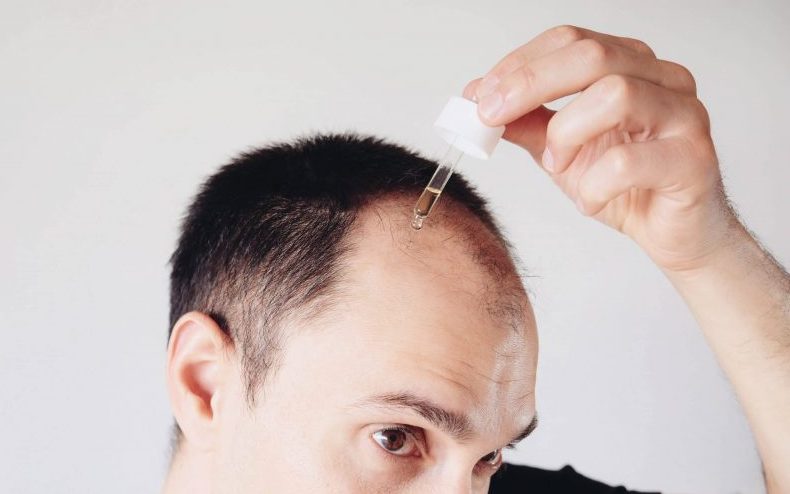
Could my hair loss be associated with stress?
Telogen Effluvium is a temporary hair loss condition when someone suffers from severe stress, emotions or hormonal changes.
A lot of women experience this type of hair loss after having a baby. Other causes link to the stress over losing a loved one or being in an accident where your body experiences extreme emotional or physical strain.
This type of hair loss causes people to loose more than 300 hairs a day whereas the average is around 50-100 strands. The hair will recover within 3-6 months naturally after the stress has subsided.
Measuring hair loss
In summary, measuring hair loss by the Hamilton-Norwood Scale is the most efficient way to diagnose male pattern baldness. Whether you’re still at stage 2/3 or have graduated to the higher stages, the method is accurate in its representation and should be a great tool to measure your own hair loss journey.
From knowing what stage of MPB you are in, you will be able to take appropriate action in turning yourself into a bald winner.

